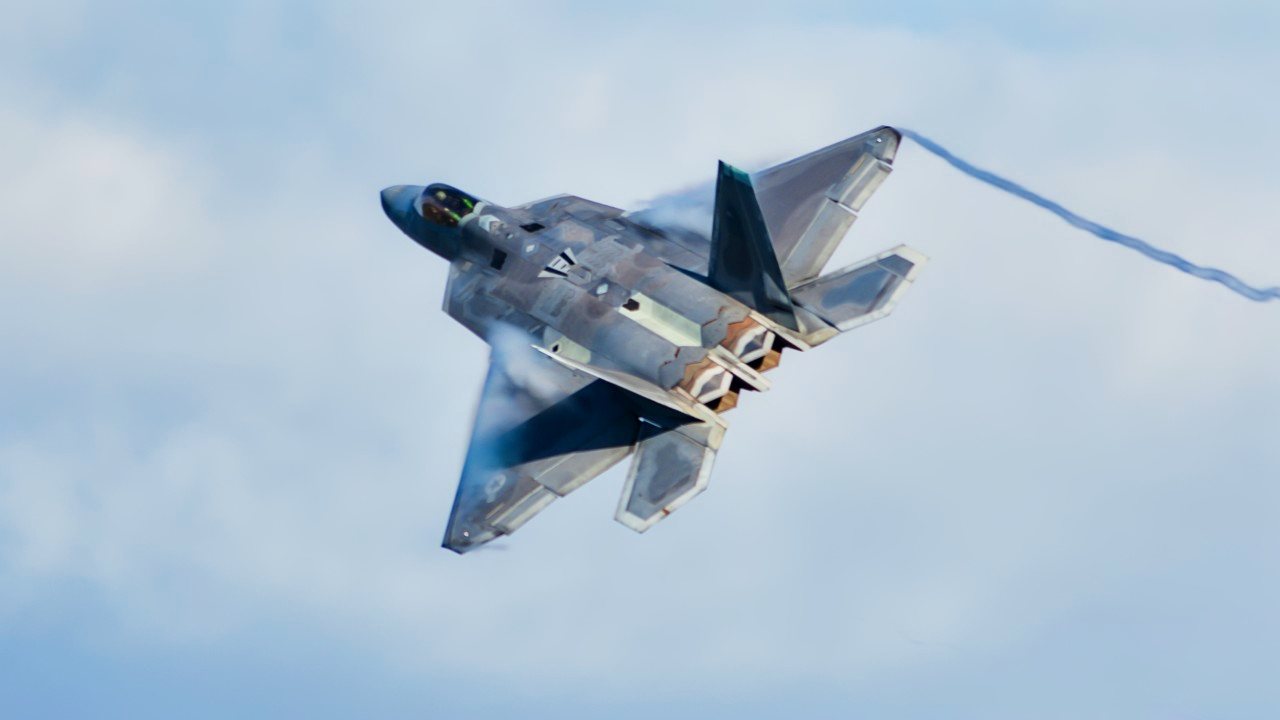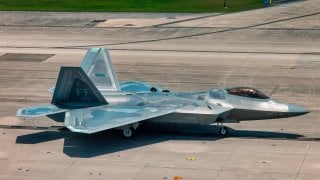F-22 Raptor's 'Comeback': How the Air Force is Keeping Its Stealth Fighter Alive
Though production of the F-22 Raptor was halted in 2011, this stealth fighter remains a cornerstone of U.S. air superiority. With the Next Generation Air Dominance (NGAD) program still years away, the Air Force is investing billions to modernize its fleet of F-22s.
What You Need to Know: Though production of the F-22 Raptor was halted in 2011, this stealth fighter remains a cornerstone of U.S. air superiority. With the Next Generation Air Dominance (NGAD) program still years away, the Air Force is investing billions to modernize its fleet of F-22s.

-Upgrades include advanced sensors and weaponry to ensure the aircraft remains competitive in future conflicts. Despite a dwindling number of operational jets, the F-22’s speed, range, and unique capabilities make it irreplaceable for now, with retirement pushed back indefinitely.
-These enhancements will keep the Raptor in the skies until the next-generation fighters are ready.
Upgrades to Extend F-22 Raptor’s Reign Until the Next-Generation Air Dominance Jet
The F-22 Raptor is the world’s first operational stealth fighter jet. Introduced in 2005, the F-22 Raptor forms the tip of the Air Force’s air superiority spear. The aircraft’s role in combat is a simple one: shoot down enemy fighter jets and open the skies for other friendly aircraft to conduct their missions.
Although Lockheed Martin has shut down the F-22 Raptor production line since 2011, the F-22 Raptor remains America’s go-to air superiority fighter jet. And it will remain so until the Next Generation Air Dominance (NGAD) fighter jet comes into the scene and replaces the F-22 Raptor.
However, that development is still some years away. The NGAD is proving to be an extremely expensive program, estimates assess a cost of $300 million per aircraft, and the Air Force, at the direction of Congress, is scrambling to modernize the F-22 Raptor, spending billions of dollars in the process, so that there is no capability gap.
Upgrading the F-22 Raptor
In many ways, the F-22 Raptor is a dying aircraft. With a closed production line, there is a lack of spare parts, and maintainers often have to cannibalize older aircraft to ensure that the newer jets can remain operational. Lockheed Martin produced only 186 F-22 Raptors, the production line was shut down early to focus on the F-35 Lightning II. Today, of that number, likely less than 100 F-22 stealth fighter jets remain operational, though the exact number remains classified.
However, through a number of upgrades, the Air Force is looking to breathe fresh air into the program and ensure that the operational aircraft remain on the skies as competitive as ever for several more years.
“The F-22 team is working really hard on executing a modernization roadmap to field advanced sensors, connectivity, weapons, and other capabilities,” Air Force Brig. Gen. Jason D. Voorheis, Program Executive Officer for Fighters and Advanced Aircraft, Air Force Life Cycle Management Center, Air Force Materiel Command, told the media in July.

“The Raptor team recently conducted six flight test efforts to demo advanced sensors. We’re executing that successfully, and that will lead to…a rapid fielding in the near future,” Voorheis added.
In terms of the specific upgrades, the Air Force is looking to add new sensors that would make the stealth fighter jet up-to-date in the current and future operational environment.
Initially, the Air Force was planning on retiring the F-22 Raptor around 2030. However, the increasingly more concerning issues with the NGAD’s price have forced Air Force officials to reassess their position. There is no new retirement date, or even estimate, but the F-22 Raptor very likely got at least another decade of life.
“What I can tell you is that we are hyper-focused on modernization to sustain that air superiority combat capability for a highly contested environment for as long as necessary,” Voorheis said.

The F-22 Raptor can reach speeds of Mach II, around 1,500 miles per hour, has a range of 1,000 miles without any refueling, and can carry a host of advanced munitions.
The F-22 Raptor is a special aircraft. Much of its onboard technology remains classified, and the aircraft was never exported to another country, despite pressure from Japan and Israel.
About the Author:
Stavros Atlamazoglou is a seasoned defense journalist specializing in special operations and a Hellenic Army veteran (national service with the 575th Marine Battalion and Army HQ). He holds a BA from the Johns Hopkins University and an MA from the Johns Hopkins’ School of Advanced International Studies (SAIS). His work has been featured in Business Insider, Sandboxx, and SOFREP.
Image Credit: Creative Commons and/or Shutterstock.


